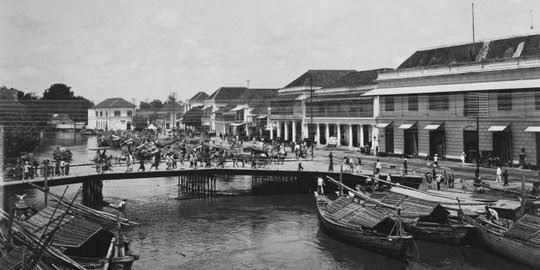
Around the 1850s, there was no street lighting yet in the city of Surabaya. No wonder, if at night the townspeople stay at home. The reason is because outside the house there was nothing at night.
At that time, if a Dutch man wanted to go to a meeting, he ordered his slave to walk ahead of him with a lamp to light the way for the master.
Meanwhile, indigenous people who wanted to go out at night usually brought their own torches to light the way.
In 1858, the Dutch East Indies government in Surabaya installed street lighting in the form of public lamps using coconut oil as fuel.
The operation of street lighting in the city of Surabaya was handed over to a Chinese contractor at a cost of 239 guilders per month. In addition to this fee, the contractor also received assistance from senior townspeople. At that time, there were 20 seniors who were employed as street lighting operational staff. The work was a form of punishment because they violated the regulations made by the Dutch East Indies government in Surabaya.
Meanwhile, every day the police were on duty to turn the street lights on and off. They also had to clean it every day.
The government contract in Surabaya with Chinese contractors related to street lighting in the form of public lamps was finally terminated in 1863.

In the following year, in 1864, the Dutch government in the city of Surabaya switched to using kerosene-fueled lamps to light the way.
Hundreds of kerosene lamps were purchased at a price of 2,500 guilders. But apparently not enough to illuminate the entire city of Surabaya. Places such as Simpang, Kayun, Kaliasin, Keputran, Embong Malang and Kupang did not have lights. As a result, those places remained dark at night.
In April 1867, the contractor who was entrusted with the responsibility of carrying out street lighting operations stopped his work. The reason was that it was difficult for him to collect costs for street lighting operations.
Following up on this, the Surabaya Residency then made a circular letter to raise funds to finance street lighting in the local city. The funds collected were 307.25 guilders and were not sufficient to finance good street lighting.
Furthermore, in 1877, the Dutch Government in Rotterdam granted a concession to the establishment of the Indische Gas Maatschappij gas factory in the city of Surabaya. The installation of gas pipes in the city of Surabaya was completed in 1879. In the same year, the gas factory began distributing gas to people's homes for lighting purposes.
Two years later, in 1881, the gas lamps on the streets of Surabaya came on. In 1920, there were 1709 gas lamps on the streets and public places in the city of Surabaya.
Then, in 1923, the street lighting with gas lamps in the city was replaced by electric lamps.
** Your post has been upvoted (11.49 %) **
Curation Trail is Open!
Join Trail Here
Delegate more BP for bigger Upvote + Daily BLURT 😉
Delegate BP Here
Upvote
https://blurtblock.herokuapp.com/blurt/upvote
Thank you 🙂 @tomoyan